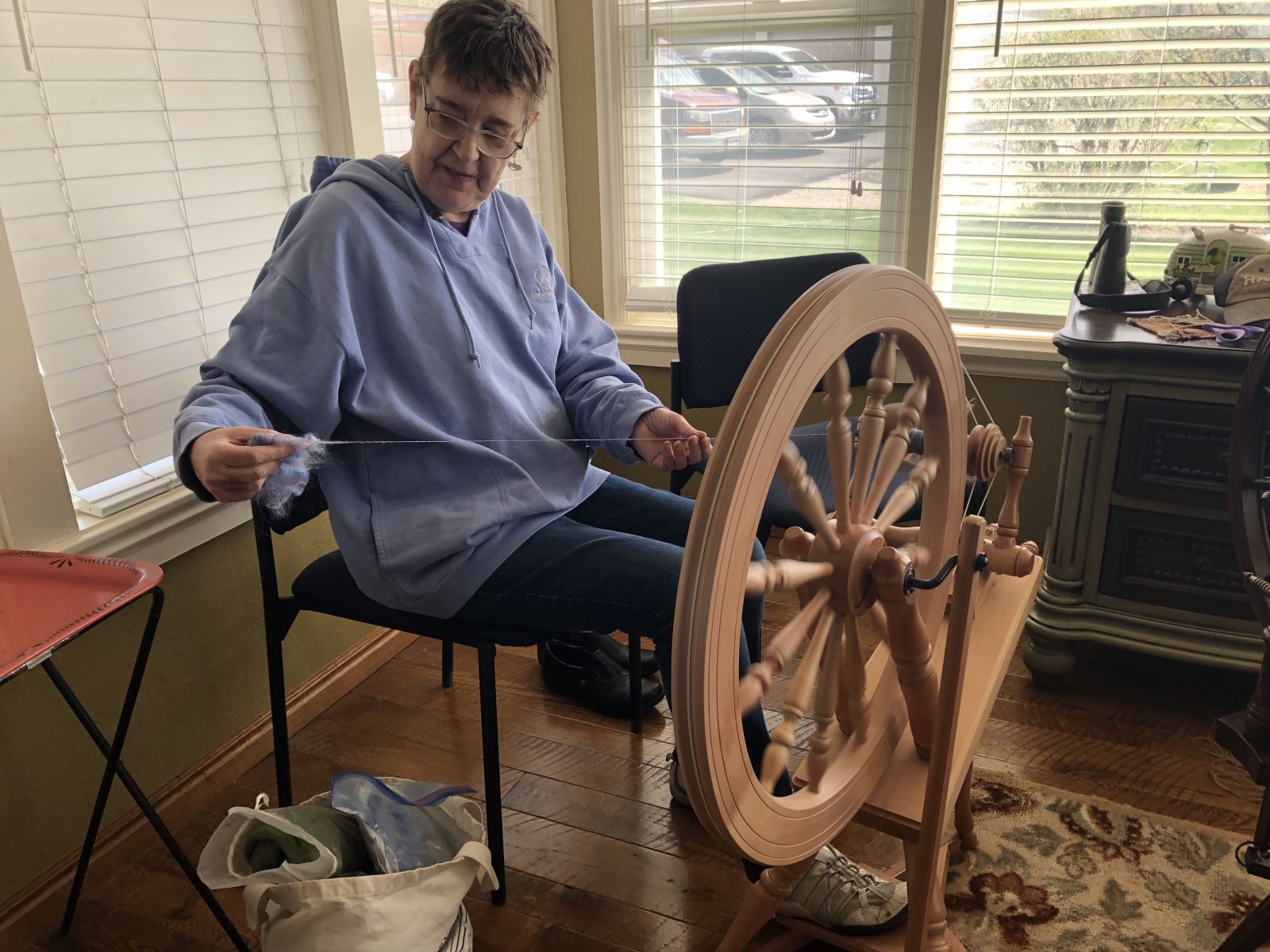The Open University is committed to making its websites and mobile applications accessible, in accordance with the Public Sector Bodies (Websites and Mobile Applications) (No. 2) Accessibility Regulations 2018.
This accessibility statement applies to OpenLearn Create.
We want as many people as possible to be able to use our websites and mobile apps, and accessibility is an essential part of our mission. On The Open University’s Accessibility hub, you'll find everything you need to answer any questions you have about accessibility, whether you're a student or a member of staff.
To adapt the content to your needs or preferences you should be able to:
- Change colours, contrasts levels and fonts.
- Resize text up to 200% without impact on the functionality of the website.
- Zoom in up to 400% without loss of information or functionality.
- Navigate the website using just a keyboard.
- tab to ‘Skip to content’ links at the top of the page to jump over repetitive information to the main content.
- tab through the content; the current location will be indicated by a clear visual change.
- control the embedded media player to play audio and video materials.
- Use a screen reader (e.g. JAWs, NVDA) to:
- listen to the content of web pages and use any functionality on the page.
- list the headings and subheadings in the page and then jump to their location on the page.
- bring up a list of meaningful links on the page.
- Use transcripts or closed captions with most audio and video materials.
- Download learning materials in alternative formats (e.g. Word document, PDF, ePub).
- If you have a print disability we provide SensusAccess to students, which is an automated service that converts files from one format to another, for example, PDF to text, audio, Word or Braille.
- AbilityNet also provides advice on making your device easier to use if you have a disability.
Compliance status
This website application is partially compliant with the Web Content Accessibility Guidelines version 2.2 AA standard, due to the non-compliances and the exemptions listed below.
Non-accessible content
The content listed below is non-accessible for the following reasons:
Non-compliance with the accessibility regulations
Platform and third-party content
OpenLearn Create provides an open educational platform where individuals and organisations can publish their own content, courses and resources.
Basic accessibility testing of the platform and content has been conducted and has been captured in the non-compliances below.
Alternative text
Some purely presentational images have not been marked as decorative within the code. People using a screen reader won’t be able to ignore these images. This fails WCAG 2.2 Success Criterion 1.1.1: Non-text Content (Level A) and will be resolved by the end of July 2026.
Some images which convey meaning do not have an informative text alternative to adequately describe their purpose. People using a screen reader won’t be able to access the information. This fails WCAG 2.2 Success Criterion 1.1.1: Non-text Content (Level A) and will be resolved by the end of July 2026.
Content resizing
Some text becomes unreadable when it is zoomed up to 200% using settings in the browser. People with low vision won’t be able to read this text. This fails WCAG 2.2 Success Criterion 1.4.4 Resize Text (Level AA) and will be resolved by the end of 2026.
Some content will not reflow correctly when it zoomed up to 400% using settings in the browser. People with low vision won’t be able to read this text or may be required to scroll horizontally as well as vertically. This fails WCAG 2.2 Success Criterion 1.4.10 Reflow (Level AA) and will be resolved by the end of 2026.
Content structure
Some page headings aren't structured in a logical way. People using screen readers will find it more difficult to navigate and understand the structure of content. This fails WCAG 2.2 Success Criterion 1.3.1 Info and Relationships (Level A) and will be resolved by the end of 2026.
Link text
Some link text does not provide enough information about the destination of the link. This makes it difficult for people using a screen reader to know where the link will take them, particularly if they are reading links out of context, (e.g., in a list of links). This fails WCAG 2.2 Success Criterion 2.4.4 Link Purpose (Level AA) and will be resolved by the end of 2026.
Keyboard navigation
Some interactive controls (links, buttons, and form fields) do not have a clear visible focus. People using a keyboard will find it difficult to understand where they are on a page. This fails WCAG 2.2 Success Criterion 2.4.7: Focus Visible (Level AA) and will be resolved by the end of 2026.
Some parts of the website trap keyboard focus. People using a keyboard will get stuck and won’t be able to navigate away from these parts of the site. This fails WCAG 2.2 Success Criterion 2.1.2 No Keyboard Trap (Level A) and will be resolved by the end of 2026.
Some interactive elements do not receive keyboard focus in a sequential and meaningful order. People using a keyboard will find it more difficult navigate content in an order that makes sense to them. This fails WCAG 2.2 Success Criterion 2.4.3: Focus Order (Level A) and will be resolved by the end of 2026.
Some parts of the website are not accessible by keyboard only. People using a keyboard won’t be able to navigate or operate these parts of the site. This fails WCAG 2.2 Success Criterion 2.1.1 Keyboard (Level A) and will be resolved by the end of 2026.
This content is not within the scope of the accessibility regulations
Pre-recorded audio and video published before 23 September 2020
Wherever possible we provide transcripts for audio, and captions and transcripts for video. Sometimes these alternatives are not available. Pre-recorded time-based media published before 23rd September 2020 is exempt from meeting the accessibility regulations. We are working to ensure that any new audio or video that we publish will meet accessibility standards.
PDFs and other documents
PDFs or other documents that are not essential to providing our services and were published before 23rd September 2018 are exempt from meeting the accessibility regulations. We are working to ensure that any new PDFs or other documents that we publish will meet accessibility standards.
Third party content not within OU control
Third party content that is not funded, developed by, or under the control of the OU is exempt from meeting the accessibility regulations.
Intranets and extranets
Content of extranets and intranets that are only available for a closed group of people, and not to the general public, are exempt from meeting the accessibility regulations if they were published before 23rd September 2019 and have not been substantially revised.
Preparation of this accessibility statement
This statement was prepared on 01 October 2024.
This statement was last reviewed on 20 November 2025.
The website was last tested on 20 August 2024.
A basic audit was undertaken by the Learner and Discovery Service, Corporate and Commercial team, focussing on a sample of webpages. The website was tested using the Accessibility Compliance Toolkit (ACT) which is an internal toolkit used to identify and check web pages for accessibility by conducting basic accessibility testing. This basic testing covers essential aspects of accessibility, but it doesn’t include all the WCAG 2.2 Level AA Success Criteria. Using the ACT combines manual checks with automated tests across a sample of pages identified as being representative of most or all of the components used on the website. The accessibility testing conducted on this website includes evaluating alternative text, colour contrast, content resizing, content structure, form labels, language of page, link text, keyboard navigation, captions and skip links.
The following accessibility testing methods and tools were used:
- W3C (World Wide Web Consortium) checks (alternative text, content structure, language of page, keyboard navigation, skip links)
- axe DevTools automated checker (colour contrast, form labels, link text)
- Manual checks (content resizing, captions).
What OpenLearn Create is doing to improve accessibility
The Open University is committed to improving the accessibility of the OpenLearn Create platform. We have introduced processes to help ensure all new content is being developed with accessibility in mind from the start and is tested to WCAG 2.2 AA standard. If you require content in an alternative format or if you require any help or support with using our platform or accessing our content, please contact us using the Open University Accessibility Feedback Form.
Our accessibility roadmap
This high-level roadmap outlines our plans to increase the accessibility of the platform, and the content hosted on it.
Winter 2025
- Assessment of historical unpublished content to 31 December 2018 towards determining what can be permanently removed or updated to current accessibility standards and republished.
Summer 2026
- Assessment of historical published content to 31 December 2019 towards determining what can be permanently removed or updated to current accessibility standards.
- Accessibility fixes as detailed in this accessibility statement to be prioritised and included in future code releases.
Autumn 2026
- The content author guide to be updated to include useful information for how to make content accessible for content creators.
Regular audits
This website is audited regularly. Of the pages that were audited in 2024, the following fixes were identified and have been implemented or are scheduled for implementation:
- Accessibility statement: our existing accessibility statement was updated on our website in November 2025.
- Internal accessibility testing of the platform: our first internal audit of the platform took place using ACT in August 2024. Regular auditing will take place to identify issues, which will be prioritised and addressed as required.
Feedback and contact information
If you find that a certain section of our website is not accessible, and you can’t get access to the information that you need, please use the Open University Accessibility Feedback Form to request support and we will ensure that you are provided with the information you require. You will need to provide your contact details and Personal Identifier if you are a student so we can get back to you. You should expect to hear back from us within 5 working days.
The OU is very experienced in meeting accessibility needs for our students. In many cases we are able to provide module and other study support materials in alternative formats for students who indicate a need for this when completing a Disability Support Form.
In addition, some module materials are available in different formats and can be downloaded from module websites. Students can contact their Student Support Team for advice.
If you are a student, or someone who has had contact with the University before, and have a complaint about the accessibility of our websites, you should raise a complaint via the complaints and appeals process.
Enforcement procedure
The Equality and Human Rights Commission (EHRC) is responsible for enforcing the Public Sector Bodies (Websites and Mobile Applications) (No. 2) Accessibility Regulations 2018 (the ‘accessibility regulations’).
If you are based in the UK, and you’re not happy with how we respond to your complaint, contact the Equality Advisory and Support Service (EASS).


